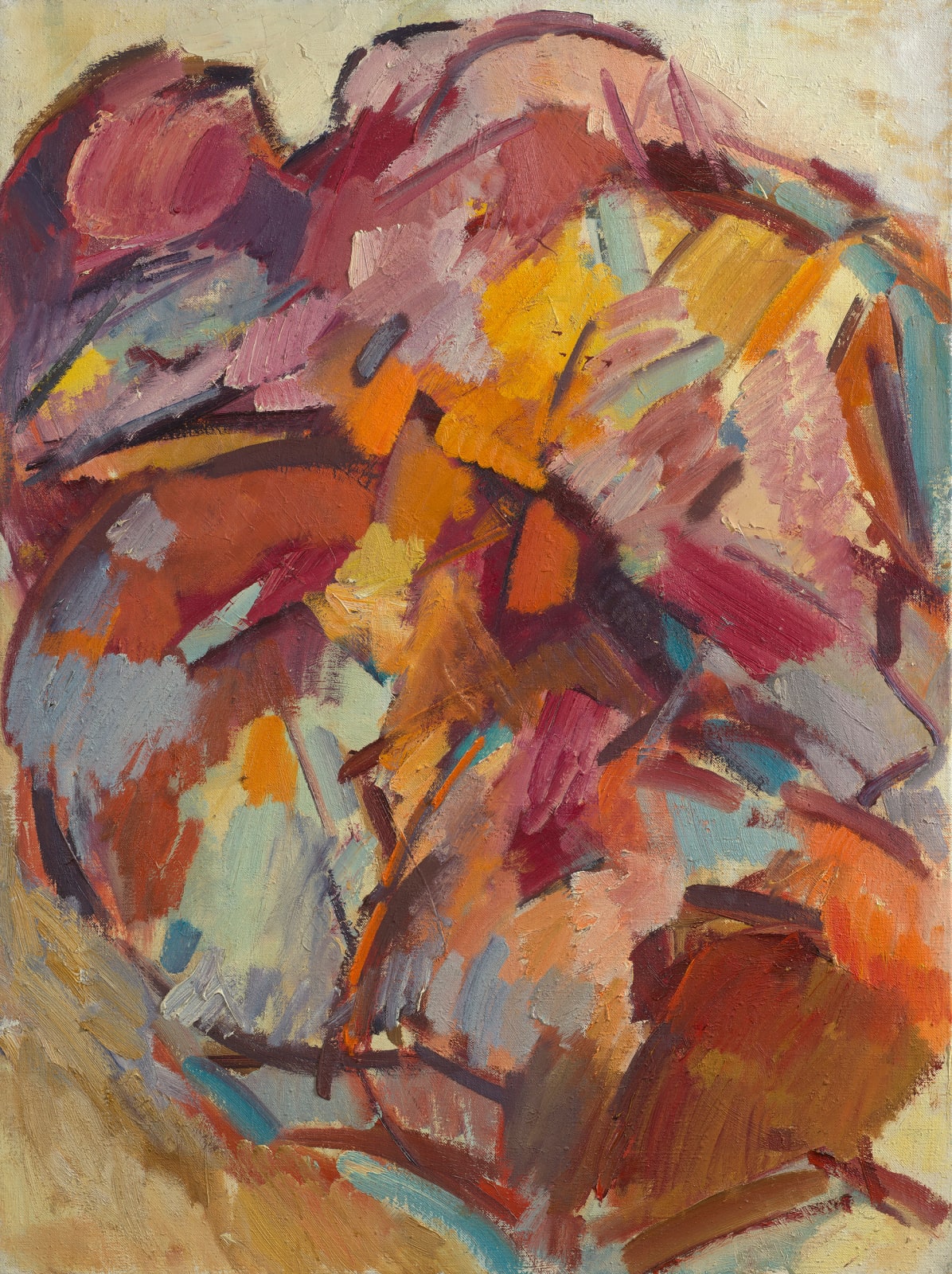-
Artworks
Dennis Creffield
Reclining Figures, 1981Oil on canvas48 x 36 1/4 in
122 x 92 cmSigned, titled and dated on reverseReclining Figures belongs to a small but important group of large scale canvases which the artist completed in the 1970s and early 80s. His move from Leeds to Brighton in...Reclining Figures belongs to a small but important group of large scale canvases which the artist completed in the 1970s and early 80s. His move from Leeds to Brighton in 1968 had a profound effect on his use of colour, with an increased use of warm oranges and reds, often offset by electric blue, mimicking the increased warmth and light he experienced in the coastal town. The colours also leant themselves to his increasing interest in figure painting. Inspired originally by a 19th century painting of two women in a bordello, his figure paintings come close to pure abstraction, but always retain a figurative element. Reclining Figures employs a strong use of foreshortening to make the image more confrontational and engaging. The influential art critic Peter Fuller (not unreasonably) compared Creffield's figure composition to Willem de Kooning, and it was during the early 1980s that the artist started to gain wider recognition, not least through a successful solo exhibition at London's Serpentine Gallery in 1980.Provenance
Direct from the artist's estate.Literature
R. Cork, Dennis Creffield: Art and Life, London, 2022, p.65, fig.65, and on the frontispiece.
